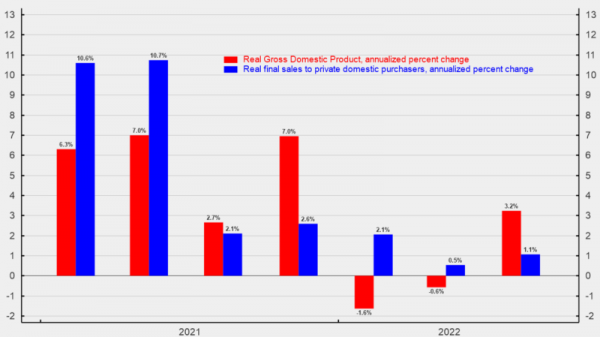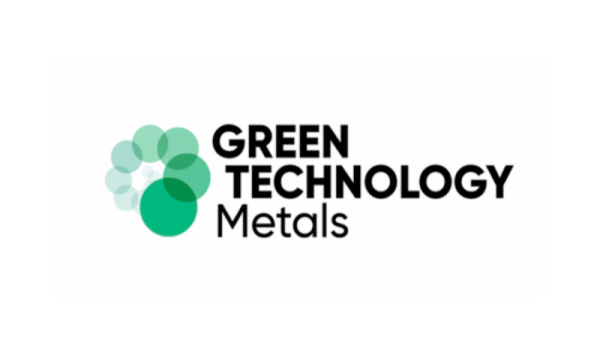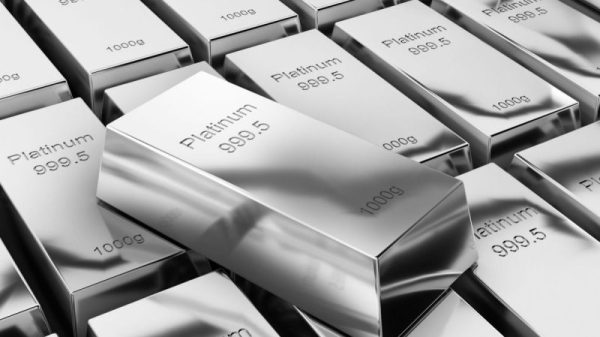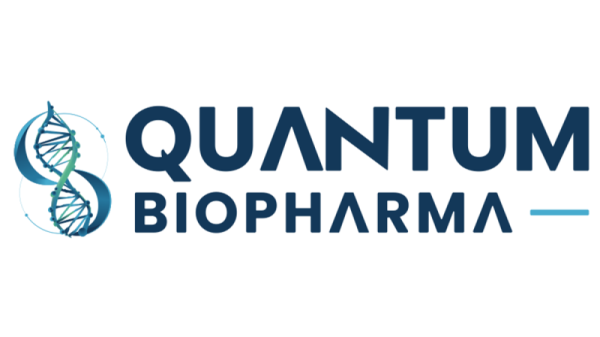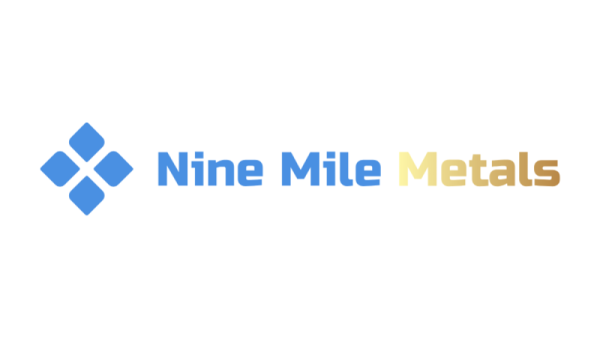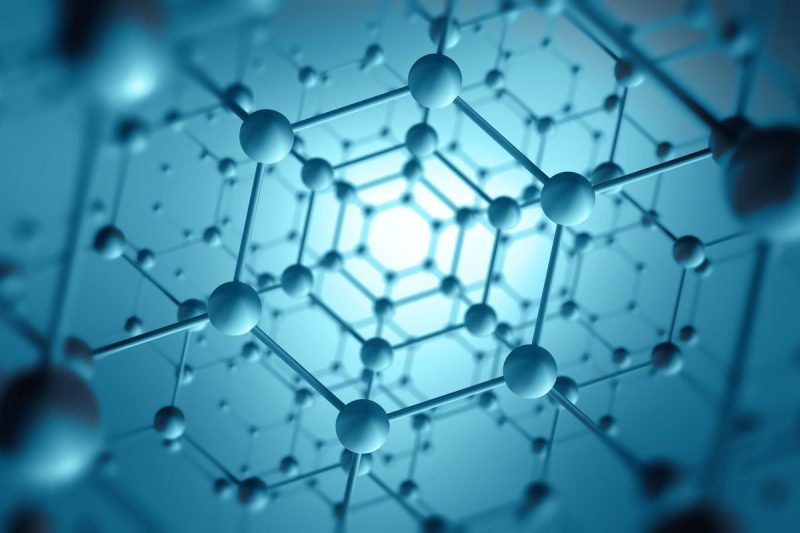

Graphene is often heralded as the “wonder material” of the 21st century, and investing in graphene companies offers investors exposure to a growing number of graphene applications across a diverse set of industries.
Technological advancements in the electronics industry has given rise to new applications for graphene given its high electrical and thermal conductivity. This includes flexible display screens, wearable devices, high-speed transistors, and advanced energy storage systems.
Demand for graphene coatings and composites is rising from the energy storage, aerospace and automotive industries, among others. Graphene coatings are used in batteries, conductors and generators to improve energy efficiency and performance, while lightweight graphene composites are being used in aircraft and automobiles.
For those interested in how to invest in graphene, here’s a look at several publicly traded graphene companies making moves in the market today. These top graphene stocks are listed in alphabetical order, and all data was accurate as of August 28, 2025.
1. Black Swan Graphene (TSXV:SWAN)
Market cap: C$102.83 million
Black Swan Graphene describes itself as an emerging powerhouse in the bulk graphene business. UK-based global chemicals manufacturer Thomas Swan & Co. holds a 15 percent interest in Black Swan and brings a portfolio of patents and intellectual property related to graphene production. Through this partnership, Black Swan is building out a fully integrated supply chain from mine to graphene products.
Black Swan launched a number of new graphene products in 2024, such as its GraphCore 01 family of graphene nanoplatelets products, which includes powders and polymer-ready masterbatches designed for the polymer industry.
In addition, the company formed a commercial partnership with advanced materials engineering company Graphene Composites that will see Black Swan’s graphene used in the fabrication of GC Shield, a patented ballistic protection technology. It also secured a distribution and sales agreement with UK-based manufacturer of plastic materials Broadway Colours to incorporate Black Swan’s graphene nanoplatelets in the manufacture of graphene enhanced masterbatches for plastic manufacturing.
Black Swan closed on a C$6 million equity financing in February 2025 which will help to fund its capacity expansion and global commercialization plans for 2025.
This includes Black Swan’s newly formed strategic partnership with thermoplastic compounds and concentrates manufacturer Modern Dispersions (MDI). Under the preferred compounder agreement, Black Swan will provide graphene nanoplatelets to Modern Dispersions, which will manufacture Graphene Enhanced Masterbatch for graphene applications.
In July and August 2025, Black Swan grew its global distribution and sales network through agreements with METCO Resources, Ferro and Thomas Swan.
Black Swan is in the process of more than tripling its production capacity from 40 metric tons of high-quality graphene annually to 140 metric tons per year by installing further capacity at its Thomas Swan facility in the UK.
2. CVD Equipment (NASDAQ:CVV)
Market cap: US$18.82 million
CVD Equipment produces chemical vapor deposition, gas control and other types of equipment and process solutions for developing and creating materials and coatings for a range of industrial applications, including aerospace engine components, medical implants, semiconductors, battery nanomaterials and solar cells.
CVD’s processing can be used to produce graphene and nanomaterials such as carbon nanotubes and silicon nanowires. Its PVT200 system is designed to grow silicon carbide crystals for the manufacture of 200 millimeter wafers. In November 2024, CVD reported a US$3.5 million follow on order for a production chemical vapor infiltration system to produce advanced, energy efficient materials for use within gas turbine engines.
CVD’s 2024 financials show revenue of US$26.9 million, up 11.5 percent year-over-year on higher revenues from its aerospace contracts and semiconductor segment. This momentum carried into 2025, with revenue for the first half of the year up 19.2 percent to US$13.4 million over the prior half-year period. This was driven by its Q1 performance, with the company reporting its revenues for the quarter were up by 69 percent year-over-year to reach US$8.3 million.
3. Directa Plus (LSE:DCTA)
Market cap: GBP 11.24 million
Leading graphene nanoplatelet producer Directa Plus makes products designed for commercial applications such as textiles and composites. The Italy-based firm has developed a patented graphene material named G+ Graphene Plus, which is both portable and scalable. Directa Plus casts a wide net, even using its graphene for golf balls with the aim of improving users’ control and swings using elasticity.
Directa Plus inked in December 2023 what it called a ‘landmark agreement’ to acquire a proprietary system for preparing graphene compounds for market-ready battery and polymer applications, opening up two more potential markets for Directa Plus products.
Its graphene products also include its proprietary Grafysorber nanoplatelets-based technology that can absorb 100 times its own weight to recover oil and hydrocarbons through treating water, sludge and emulsions. The company stated it is seeing market traction in environmental contracts through its subsidiary Setcar, which is an environmental services company, and its Grafysorber tech.
Setcar secured a 1.5 million euro contract in February 2025 with Midia International to provide tank cleaning and waste disposal services using Grafysorber for Midia’s offshore drilling campaign in the Black Sea. That same month, Setcar renewed a 1.1 million euro contract with Ford Otosan, a Romanian subsidiary of Ford Motor (NASDAQ:F), to deliver total waste management services.
Later in April, Setcar reported another contract extension, this time with OMV Petrom worth 1.59 million euros for the use of Grafysorber technology to treat oil sludges, emulsions and contaminated water.
4. First Graphene (ASX:FGR,OTCQB:FGPHF)
Market cap: AU$39.14 million
First Graphene is an advanced materials company that has developed an environmentally sound method of converting ultra-high-grade graphite into the competitively priced, high-quality graphene in bulk quantities. First Graphene is part of a nine-member consortium working to develop and commercialize lightweight impermeable cryogenic all-composite tanks for the safe storage and transport of liquid hydrogen.
The firm is working with three Australian universities on developing graphene products and associated intellectual properties, including PureGRAPH, its graphene powder. First Graphene is vertically integrated, and applications for its products extend to fire retardancy, energy storage and concrete, among others.
First Graphene has secured funding for a collaborative research project aimed at commercializing its Kainos technology for the production of ‘high-quality, battery-grade synthetic graphite and pristine graphene from petroleum feedstock using a scalable hydrodynamic cavitation manufacturing process.’
First Graphene kicked off the new year in 2025 by announcing its Kainos technology secured patents from the Australian and South Korean governments. The following month, the company completed a AU$2.4 million private placement to help fund the acceleration of its global commercial pipeline.
In May 2025, the company secured an exclusive supply agreement with Indonesian industrial safety boots manufacturer Alasmas Berkat Utama. The contract will see First Graphene provide approximately 2.5 metric tons of PureGRAPH 10 masterbatch over the first two years to be used in safety footwear for workers in the Southeast Asia mining industry. The company’s fiscal year 2025 annual income was estimated at AU$1.2 million in its June 2025 quarterly report.
First Graphene initiated a 10 month project in partnership with Imperial College London and University College London in July 2025 aimed at incorporating graphene in the 3D printing of metal components for use in high-end applications in the aerospace and motor sports industries.
5. Graphene Manufacturing Group (TSXV:GMG,OTCQX:GMGMF)
Market cap: C$101.09 million
Graphene Manufacturing Group (GMG) is a clean-technology company bringing to market energy saving and energy storage solutions based on its proprietary graphene production process.
Its products include graphene enhanced energy-saving coatings for HVAC, electronic heat sinks, industrial process plants and data center applications, as well as a graphene lubricant additive for diesel and gasoline engines. The company is also working to develop and commercialize graphene aluminum-ion batteries in collaboration with Rio Tinto (ASX:RIO,NYSE:RIO,LSE:RIO) and the University of Queensland with funding from the Australian government.
In May 2025, GMG’s board of directors approved an AU$900,000 expenditure for the early works of its planned Gen 2.0 Graphene Manufacturing Technology plant will be built at GMG’s existing manufacturing facility in Queensland, Australia. With an estimated total capital cost of AU$2.3 million, the Gen 2.0 plant is expected to be online by end of June 2026. It will initially operate at 1 metric ton per annum, work will commence shortly after to upgrade its capacity to an expected 10 metric tons per annum.
That same month, GMG launched a website for direct sales of its engine performance enhancing graphene liquid concentrate G Lubricant, and in July it commenced direct sales to end customers in Australia, the UK, Europe, China, Canada and the US.
6. Haydale Graphene Industries (LSE:HAYD)
Market cap: GBP 23.78 million
Through its subsidiaries, Haydale Graphene Industries designs, develops and commercializes advanced materials. The company is focused on commercializing its proprietary heating ink-based technology and integrating graphene and other nanomaterials into next-generation industrial applications.
Haydale has a partnership with the University of Manchester’s Graphene Engineering Innovation Centre (GEIC), through which it is researching and developing graphene-based innovations such as conductive ink heating applications for the automotive and future homes sectors.
In March 2025, the company announced it had secured new commercial contracts for its new heating systems from Affordable Warmth Solutions to develop a further graphene heater ink product, and with the national gas grid, National Gas Transmission, for the use of its technology in upgrading the gas network.
The following month, Haydale shared that its JustHeat graphene-based heating system had achieved CE marking certification, meaning that it meets European safety and environmental standards compliance.
7. HydroGraph Clean Power (CSE:HG,OTCQB:HGRAF)
Market cap: C$518.48 million
HydroGraph Clean Power produces cost-effective, high-purity graphene, hydrogen and other strategic nanomaterials. The company has an exclusive license from Kansas State University to produce graphene and hydrogen via the organization’s patented detonation process, which results in 99.8 percent pure carbon content graphene.
At the top of the year, results from a research study conducted with Arizona State University demonstrated that HydroGraph’s Fractal Graphene is an ideal material for ultra-high-performance concrete and 3D-printed structures. Then, in February, the company announced a technical collaboration with an unnamed global leader to use graphene technology in high-performance fiber applications.
HydroGraph launched an advanced graphene dispersions product line in March which is designed to produce high-performance electrodes for use in energy storage solutions. The line was developed in collaboration with battery materials and testing services company NEI.
In July, Hydrograph kicked off a Compounding Partner Program aimed at reaching commercial-scale production of its high-performance Fractal Graphene in thermoplastics. The first group of certified partners are in the automotive and packaging sectors.
Hydrograph’s graphene products also have applications in the medical sector. In August, the company announced a new commercialization agreement that will see Ease Healthcare market the LEAP early detection lung cancer test that incorporates HydroGraph’s patented fractal graphene with Hawkeye Bio’s patented biosensor.
8. NanoXplore (TSXV:GRA,OTCQX:NNXPF)
Market cap: C$536.64 million
Established in 2011, NanoXplore is able to produce high volumes of graphene at affordable prices due to its unique and environmentally friendly production process. The company’s GrapheneBlack graphene powder can be used in plastic products to greatly increase their reusability and recyclability.
NanoXplore is also targeting lithium-ion batteries with its patented SiliconGraphene battery anode material solution, which employs GrapheneBlack as a coating agent around silicon to make a safer, more reliable cell. NanoXplore’s graphene products are also being used in internal combustion engine vehicles.
As part of its five year strategic plan, last year NanoXplore increased the production capacity at its plant in Québec, Canada. The capacity expansion will enable the company to meet increased demand from an existing customer for its graphene-enhanced composite products. The customer assumed a significant portion of the expansion costs.
In its fiscal Q3 2025 financials for the quarter ended March 31, 2025, the company reported total revenues of C$30.45 million for the quarter, down 10 percent from the same quarter in the previous year. NanoXplore highlighted increases in its adjusted earnings before interest, taxes, depreciation and amortization, which totaled C$1,420,555 compared to C$571,968 in Q3 2024.
9. Talga Group (ASX:TLG,OTCQX:TLGRF)
Market cap: AU$230.05 million
Talga Group is a vertically integrated battery anode and materials company, mining its own graphite and producing anodes. It has operations in Sweden, Japan, Australia, Germany and the UK. The company also produces graphene additives for use by materials manufacturers in applications such as concrete, coatings, plastics and energy storage.
Talga has the Talphite and Talphene lines of graphene products, which include conductive additives for battery cathode and anode products, solid-state anodes and graphite recycling.
In April, the Swedish Agency for Economic and Regional Growth granted Talgas’ Luleå anode refinery in Sweden Net-Zero Strategic Project status under the EU Net-Zero Industry Act. Luleå will be supplied by graphite from its Vittangi graphite project in Sweden. Two months later, the company announced that the Swedish government gave the greenlight to its mining permit for the Nunasvaara South natural graphite mine in Northern Sweden.
As for its end products, in May Talga secured a binding offtake agreement with battery charging technology company Nyobolt for approximately 3,000 metric tons of Talga’s flagship battery anode product, Talnode-C, for an initial term of four years starting May 13, 2025. The anodes will be supplied from the Luleå anode refinery.
In mid-August, Talga launched a new proprietary graphite anode product, Talnode-R, made from recycled lithium-ion battery waste from two recycling streams: gigafactory production scrap and spent anodes from end-of-life batteries.
Private graphene companies
The graphene stocks listed above are by no means the only graphene-focused companies. Investors interested in graphene would also do well to learn more about the private companies focused on graphene technology, including ACS Material, Advanced Graphene Products, Graphene Platform, Graphenea, Grafoid and Universal Matter.
FAQs for graphene
What is graphene?
Graphene is a single layer of carbon atoms arranged in a hexagonal lattice. First produced in 2004, when professors at England’s University of Manchester used Scotch tape to peel flakes of graphene off of graphite, the material is 200 times stronger than steel and thinner than a single sheet of paper. Graphene has many possible applications in various fields, such as batteries, sensors, solar panels, electronics, medical equipment and sports gear.
What are some good properties of graphene?
Graphene’s outstanding properties include high thermal and electrical conductivity, high elasticity and flexibility, high hardness and resistance, transparency and the ability to generate electricity via exposure to sunlight.
What is the difference between graphene and graphite?
Graphene and graphite are both allotropes of carbon, meaning they are structurally different forms of the same element. A key difference between them is that graphene is a single layer of graphite.
Securities Disclosure: I, Melissa Pistilli, hold no direct investment interest in any company mentioned in this article.














